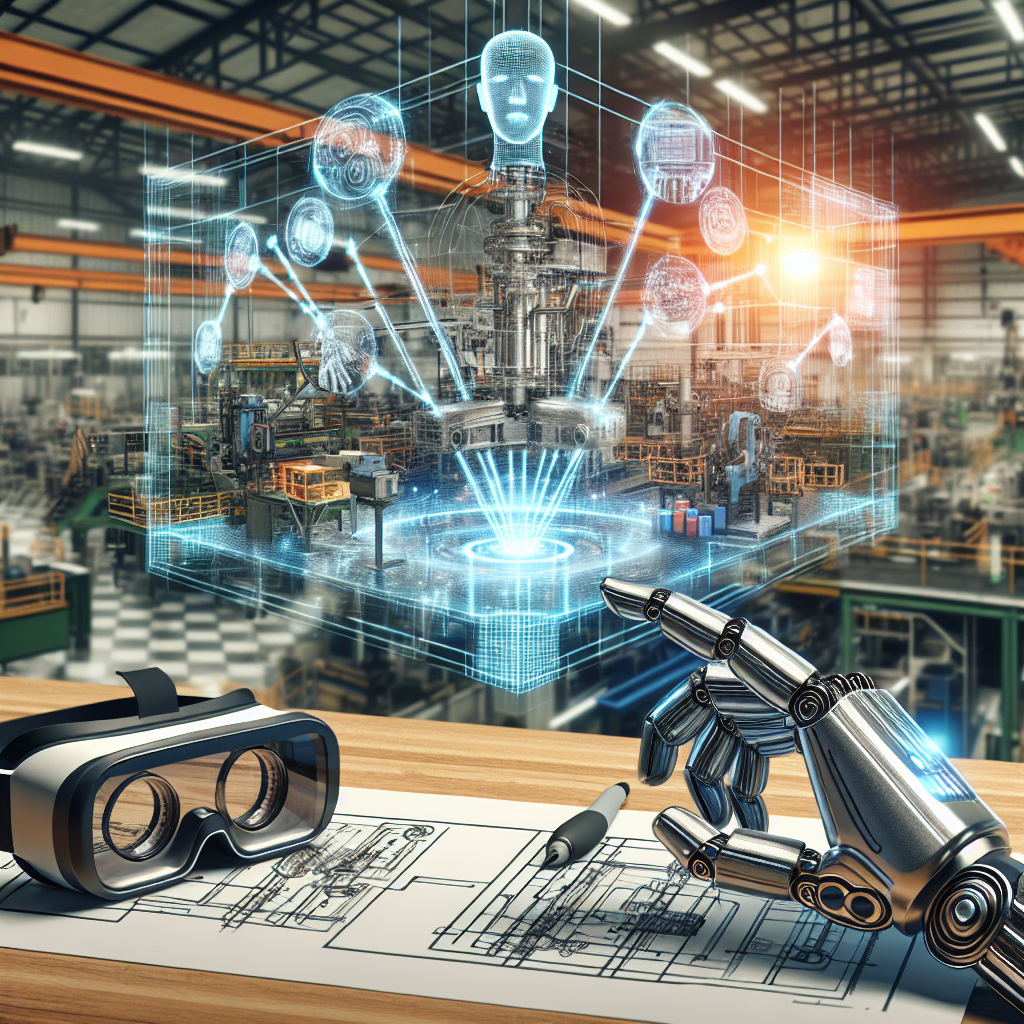Artificial Intelligence (AI) and Augmented Reality (AR) are revolutionizing the way manufacturing companies train their employees. These cutting-edge technologies are being used to enhance the efficiency, effectiveness, and safety of training programs, ultimately leading to increased productivity and reduced costs. In this article, we will explore how AI and AR are being implemented in manufacturing training, their benefits, and some frequently asked questions about these technologies.
AI in Manufacturing Training
AI is being used in manufacturing training to personalize learning experiences, provide real-time feedback, and automate repetitive tasks. One of the key applications of AI in training is the creation of intelligent tutoring systems that adapt to the individual needs of each learner. These systems use machine learning algorithms to analyze data on the learner’s performance and preferences, and then provide customized content and guidance to help them improve their skills.
AI is also being used to provide real-time feedback to trainees during simulations and hands-on training exercises. For example, AI-powered sensors can monitor a trainee’s movements and provide instant feedback on their technique, helping them to correct mistakes and improve their performance. This real-time feedback can significantly accelerate the learning process and help trainees to master new skills more quickly.
Another important application of AI in manufacturing training is the automation of repetitive tasks, such as grading assessments and tracking progress. AI algorithms can analyze large amounts of data on trainee performance and generate detailed reports on their strengths and areas for improvement. This data-driven approach allows trainers to identify trends and patterns in trainee performance, and then tailor their training programs to address specific needs.
Overall, AI is revolutionizing manufacturing training by providing personalized learning experiences, real-time feedback, and automated assessments. These capabilities are helping companies to train their employees more effectively and efficiently, leading to improved productivity and reduced costs.
AR in Manufacturing Training
Augmented Reality (AR) is another technology that is transforming manufacturing training by providing immersive, interactive learning experiences. AR overlays digital information onto the physical world, allowing trainees to visualize complex concepts and procedures in a realistic and engaging way. This hands-on approach to training can significantly enhance the retention and application of knowledge, leading to better outcomes for both trainees and companies.
One of the key applications of AR in manufacturing training is the creation of interactive simulations that replicate real-world scenarios. Trainees can use AR headsets or mobile devices to navigate virtual environments, interact with digital objects, and practice complex tasks in a safe and controlled setting. This hands-on experience helps trainees to develop their skills and confidence, without the risk of damaging equipment or causing accidents.
AR is also being used to provide on-the-job training and support for workers in manufacturing environments. For example, AR-enabled smart glasses can overlay step-by-step instructions, safety guidelines, and troubleshooting tips onto the worker’s field of view, helping them to perform tasks more efficiently and accurately. This real-time guidance can reduce errors, improve quality, and enhance worker productivity.
Overall, AR is revolutionizing manufacturing training by providing immersive, interactive learning experiences that enhance retention, engagement, and performance. Companies that adopt AR technology are seeing significant improvements in trainee outcomes, as well as benefits such as reduced training time and costs.
FAQs about AI and AR in Manufacturing Training
Q: How can AI improve the efficiency of manufacturing training programs?
A: AI can improve the efficiency of training programs by providing personalized learning experiences, real-time feedback, and automated assessments. These capabilities help trainees to learn new skills more quickly and effectively, leading to improved productivity and reduced costs.
Q: What are some examples of AI applications in manufacturing training?
A: Some examples of AI applications in manufacturing training include intelligent tutoring systems, real-time feedback sensors, and automated assessment tools. These technologies are being used to personalize learning experiences, provide instant feedback, and automate repetitive tasks.
Q: How can AR enhance the effectiveness of manufacturing training?
A: AR can enhance the effectiveness of training programs by providing immersive, interactive learning experiences that improve retention, engagement, and performance. Trainees can use AR to practice complex tasks, receive real-time guidance, and simulate real-world scenarios, leading to better outcomes for both trainees and companies.
Q: What are some examples of AR applications in manufacturing training?
A: Some examples of AR applications in manufacturing training include interactive simulations, on-the-job training support, and digital work instructions. These technologies help trainees to visualize complex concepts, practice hands-on tasks, and receive real-time guidance, leading to improved skills and performance.
In conclusion, AI and AR are revolutionizing manufacturing training by providing personalized learning experiences, real-time feedback, and immersive, interactive simulations. Companies that adopt these technologies are seeing significant improvements in trainee outcomes, as well as benefits such as reduced training time and costs. As AI and AR continue to evolve, they are likely to play an even greater role in shaping the future of manufacturing training and workforce development.

